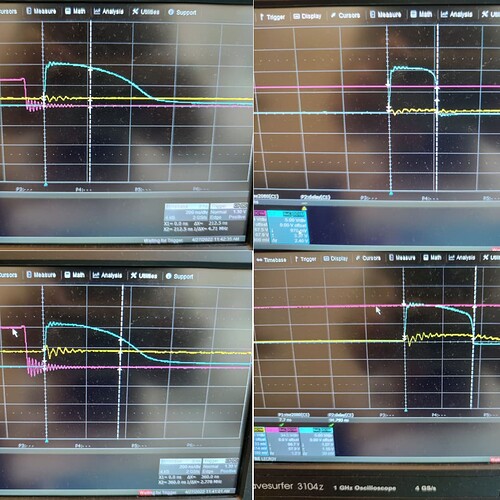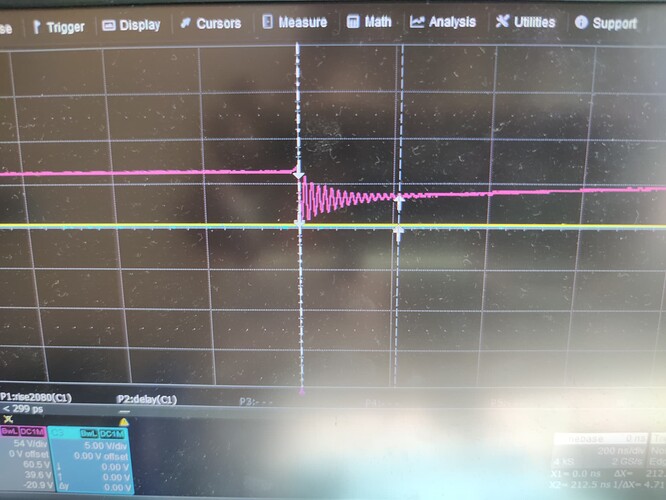Hi all,
I am trying to use the chipWhisperer as a trigger for the chipShouter.
Using the Python API to configure the chipShouter and then manually arming and pulsing, I get different kind of waveforms, that change their amplitude and duration as expected.
But when I try to use the same settings through external trigger (chipWhisperer scope.glitch sma port using lowpower glitch configuration to chipShouter’s smb port) I always get the same waveform measuring through oscilloscope.
As suggested in cs manual i have set:
scope.glitch.output = "enable_only"
scope.io.glitch_lp = True
cs.hwtrig_term = False
cs.hwtrig_mode = False
SCOPE state
cwlite Device
sn = 4420312046304a383030342035303038
fw_version =
major = 0
minor = 30
debug = 0
gain =
mode = high
gain = 30
db = 24.8359375
adc =
state = False
basic_mode = rising_edge
timeout = 2
offset = 0
presamples = 0
samples = 5000
decimate = 1
trig_count = 3271224352
fifo_fill_mode = normal
clock =
adc_src = clkgen_x1
adc_phase = 0
adc_freq = 7384609
adc_rate = 7384609.0
adc_locked = True
freq_ctr = 0
freq_ctr_src = extclk
clkgen_src = system
extclk_freq = 10000000
clkgen_mul = 2
clkgen_div = 26
clkgen_freq = 7384615.384615385
clkgen_locked = True
trigger =
triggers = tio4
module = basic
io =
tio1 = serial_rx
tio2 = serial_tx
tio3 = high_z
tio4 = high_z
pdid = high_z
pdic = high_z
nrst = high_z
glitch_hp = False
glitch_lp = True
extclk_src = hs1
hs2 = clkgen
target_pwr = True
tio_states = (0, 1, 0, 0)
cdc_settings = array('B', [0, 0])
glitch =
clk_src = clkgen
width = 10.15625
width_fine = 0
offset = 10.15625
offset_fine = 0
trigger_src = ext_single
arm_timing = after_scope
ext_offset = 0
repeat = 8190
output = enable_only
CHIPSHOUTER state
api_version = 0.0.0
armed = True
voltage =
set = 300
measured = 296
pulse =
width = 190
repeat = 1
deadtime = 10
actual width = 240
state = armed
trigger_safe = True
faults_current = []
faults_latched = ['fault_trigger_glitch']
temperature_mosfet = 35
temperature_diode = 31
temperature_xformer = 42
arm_timeout = 2
hwtrig_term = False
hwtrig_mode = False
emode = False
mute = True
absent_temp = 1
pat_enable = False
pat_wave = 0110000
reset_config = 0
reset = False
board_id = HVFO3B:1.8.7
boot_enable = 0
Top left corner : 180ns width 300v using cw trigger
Top right corner: 180ns width 300v manual
Bottom left corner: 360ns width 300v using cw trigger
Bottom right corner: 360ns width 300v manual
As you can see the pulse width looks exactly the same for the two different settings, how can i solve the problem? Thanks in advance
edit:
I don’t know if it can be helpful but another difference I have noticed is that the beep sound of the chipshouter triggers only when used manually or through python, and is not hearable when triggered via chipwhisperer

